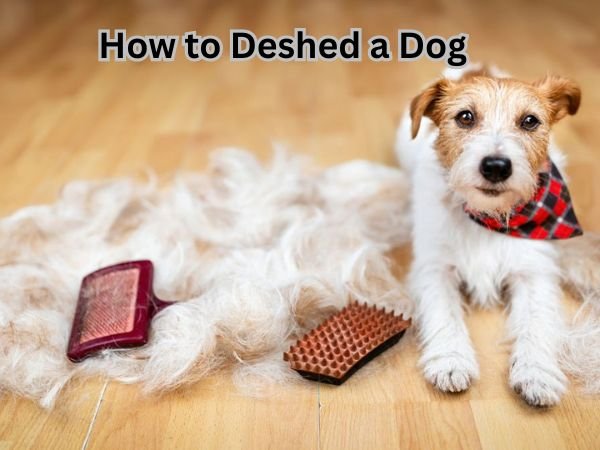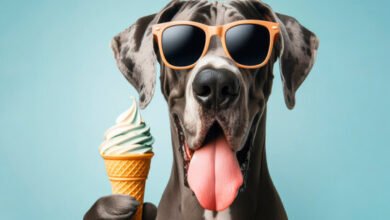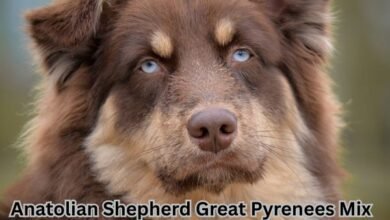
How to Deshed a Dog is a question many pet owners ask when faced with the challenge of managing fur around the home and keeping their furry friends comfortable. Deshedding is more than just a cleaning routine—it’s an essential part of maintaining your dog’s health and well-being. By removing the loose undercoat, deshedding helps prevent skin irritations, reduces mats, and promotes airflow that keeps your dog cool, especially in warmer months. For homeowners, it means less fur on furniture, floors, and clothes, making daily life more enjoyable and allergy symptoms less severe.
If shedding feels overwhelming, don’t worry—this article shares 10 brilliant hacks to make deshedding easy, effective, and even enjoyable for both you and your pet. Understanding this process will help keep your home cleaner and your dog healthier and happier.
What is Deshedding and Why is it Important?
Deshedding is a special grooming technique that removes loose, dead hair from your dog’s undercoat before it falls out naturally. Unlike regular brushing, deshedding targets the soft, fluffy layer of fur beneath your pet’s outer coat.
Think of it as a deep clean for your dog’s fur. While regular brushing handles surface tangles, deshedding gets to the root of excessive shedding.
Why Deshedding Matters for Your Pet
Health Benefits:
- Prevents painful matting and tangles
- Improves air circulation to the skin
- Reduces skin irritation and hot spots
- Helps you spot skin problems early
- Keeps your dog cooler in warm weather
Comfort Benefits:
- Makes your dog feel lighter and more comfortable
- Reduces itching from loose hair
- Creates bonding time between you and your pet
Benefits for Pet Owners
Around the House:
- Less dog hair on furniture and clothes
- Easier cleaning and vacuuming
- Fewer hairballs if you have cats too
- Better air quality for family members with allergies
Cost Savings:
- Fewer professional grooming visits
- Less money spent on lint rollers and cleaning supplies
- Reduced wear on your vacuum cleaner
Peace of Mind:
- Better control over dog shedding
- More enjoyable cuddle time without fur everywhere
- Cleaner car rides with your pet
How to Deshed a Dog-Regular deshedding isn’t just about pet grooming – it’s about creating a happier, healthier environment for both you and your furry friend. When done correctly, this simple dog hair removal technique makes life better for everyone in your household.
10 Brilliant Hacks for Deshedding Your Dog-How to Deshed a Dog?
Tired of finding dog hair everywhere? These simple tricks will help you master shedding control and keep your home fur-free!
1. The Magic of Regular Brushing
- Brush your dog daily during shedding season
- Use circular motions to catch loose fur before it falls
- Benefit: Reduces hair around your home by up to 80%
2. Choose the Right Deshedding Tools
- Slicker brushes work great for most coat types
- Undercoat rakes are perfect for double-coated breeds
- De-shedding tools like FURminator remove loose undercoat effectively
- Tip: Match the tool to your dog’s specific coat type
3. The Bath-and-Blow Method
- Give your dog a warm bath to loosen dead hair
- Use a high-velocity dryer to blow out loose fur
- Benefit: Removes more hair than brushing alone
4. Add Omega-3 to Their Diet
- Fish oil supplements promote healthy coat growth
- Reduces excessive shedding from poor coat health
- Tip: Check with your vet for the right dosage
5. The Damp Cloth Trick
- Wipe your dog with a slightly damp cloth daily
- The moisture catches loose hairs like a magnet
- Perfect for: Quick touch-ups between brushing sessions
6. Strategic Grooming Schedule
- Brush before meals when your dog is calmer
- Create a routine your dog expects and enjoys
- Benefit: Makes deshedding a bonding experience
7. Use Deshedding Shampoos
- Special formulas help loosen dead undercoat
- Follow up with a moisturizing conditioner
- Dog grooming hack: Brush while the conditioner is still in their coat
8. The Rubber Glove Method
- Put on slightly damp rubber gloves
- Pet your dog normally – hair sticks to the gloves
- Great for: Dogs who don’t like traditional brushes
9. Control Your Home Environment
- Use air purifiers to catch floating hair
- Vacuum regularly with pet-specific attachments
- Tip: Fabric softener sheets on furniture repel pet hair
10. Professional Grooming Sessions
- Schedule regular visits during peak shedding seasons
- Professional tools and techniques work wonders
- Best dog deshedding tools are often available at grooming salons
How to Deshed a Dog- remember: Consistency is key! These shedding control methods work best when used regularly, not just when the problem gets out of hand.
Best Tools for Deshedding Dogs
How to Deshed a Dog- Dealing with dog hair everywhere? You’re not alone! The right deshedding tools can make a huge difference in keeping your home cleaner and your furry friend more comfortable. Let’s explore the most effective tools that actually work.
Essential Deshedding Brushes
Undercoat Rakes
These are game-changers for double-coated breeds. The long teeth reach through the topcoat to grab loose undercoat fur before it ends up on your couch.
Slicker Brushes
Perfect for daily maintenance, these brushes have fine wire bristles that catch loose hair and prevent mats. They work great on most coat types.
Pin Brushes
Gentle yet effective, pin brushes are ideal for dogs with sensitive skin. The rounded tips massage while removing loose fur.
Convenient Grooming Gloves for Dogs
Rubber Grooming Gloves
Your dog thinks they’re getting petted while you’re actually collecting shed hair! These gloves are perfect for:
- Dogs who hate traditional brushes
- Quick touch-ups between grooming sessions
- Bonding time that feels like play
Silicone Grooming Gloves
Similar to rubber gloves but with better grip and durability. The textured surface grabs hair effectively while feeling gentle on your pet’s skin.
Professional-Grade Deshedding Combs
Metal Deshedding Combs
These heavy-duty tools have closely spaced teeth that catch even the finest undercoat. They’re especially useful for:
- Thick, double coats
- Seasonal shedding periods
- Stubborn mats and tangles
Rotating Pin Combs
How to Deshed a Dog- The pins rotate as you brush, preventing hair from getting tangled in the tool. This makes grooming faster and more comfortable for your dog.
Specialized Deshedding Tools
Deshedding Rakes with Multiple Rows
These tools have several rows of teeth at different lengths, making them incredibly efficient at removing loose fur in fewer strokes.
Electric Deshedding Tools
For heavy shedders, electric tools can save time and effort. They gently vibrate to help loosen fur while you brush.
How to Deshed a Dog-Remember, the best tool depends on your dog’s coat type, size, and temperament. Start with gentler options and gradually work up to more intensive tools as your pet gets comfortable with the grooming routine.
Tips for Different Dog Breeds and Coat Types
How to Deshed a Dog- Every dog is unique, and so is their coat! Understanding your furry friend’s specific grooming needs makes deshedding much easier and more effective. Let’s break down the best approaches for different coat types.
Short-Haired Dogs
Best for: Beagles, Boxers, Bulldogs, Dalmatians
These lucky pups are the easiest to maintain, but they still shed plenty!
- Use a rubber grooming mitt – Perfect for daily quick sessions
- Weekly bristle brush routine keeps loose hair under control
- Focus on problem areas like the back and sides where hair accumulates
- Bath monthly with a deshedding shampoo to loosen dead hair
- Quick 5-minute daily brushing prevents hair from ending up on your furniture
Pro tip: Short-haired dogs often shed year-round, so consistency is key!
Long-Haired Dogs
Best for: Golden Retrievers, Afghan Hounds, Yorkshire Terriers, Shih Tzus
These beautiful coats need extra love and attention to prevent matting and excessive shedding.
- Daily brushing is non-negotiable – Use a slicker brush followed by a metal comb
- Start from the bottom up when brushing to avoid pulling and discomfort
- Pay special attention to: Behind ears, under legs, chest, and tail area
- Professional grooming every 6-8 weeks helps maintain coat health
- Use detangling spray before brushing to make the process smoother
- Undercoat rake twice weekly during shedding seasons
Remember: Never brush a wet long-haired coat – it can cause breakage and matting!
Double-Coated Dogs
Best for: German Shepherds, Huskies, Golden Retrievers, Border Collies
These dogs have both a soft undercoat and a protective outer coat – they’re serious shedders!
- Undercoat rake is your best friend – Use it 2-3 times per week
- Work in sections to thoroughly reach the undercoat without overwhelming your dog
- Expect seasonal “coat blowouts” in spring and fall – daily brushing during these times
- Never shave a double coat – it disrupts their natural temperature regulation
- Use a high-velocity dryer after baths to remove loose undercoat
- Regular professional deshedding treatments can be a game-changer
Fun fact: During shedding season, you might collect enough fur to knit a sweater!
Wire-Haired and Curly-Coated Dogs
Best for: Poodles, Portuguese Water Dogs, Wire Fox Terriers, Airedales
These unique coats require special techniques to manage shedding effectively.
- Pin brush for daily maintenance – Gentle on curls and wires
- Professional grooming every 4-6 weeks for proper coat maintenance
- Hand-stripping for wire coats helps maintain texture and reduce shedding
- Regular trimming prevents matting and keeps shedding manageable
- Use a dematting comb for stubborn tangles
- Avoid over-bathing – it can make curly coats frizzy and harder to manage
Good news: Many of these breeds are considered “low-shedding” once properly maintained!
Breed-Specific Grooming Tips
German Shepherds & Belgian Malinois:
- Focus on the “pants” area where fur gets thickest
- Use an undercoat rake during their twice-yearly coat blows
Labrador Retrievers:
- Their water-resistant coat needs special attention to the dense undercoat
- Weekly thorough brushing prevents seasonal shedding disasters
Pomeranians & Spitz Breeds:
- Extra gentle brushing to avoid damaging their fluffy double coat
- Pay attention to the ruff around their neck
Cocker Spaniels:
- Regular ear cleaning along with brushing prevents matting in those beautiful feathery areas
- Professional grooming helps maintain their silky coat texture
How to Deshed a Dog- The key to successful deshedding is understanding your dog’s unique needs and staying consistent with your routine. Your pup will thank you with a healthier, shinier coat and fewer tumbleweeds of fur rolling around your house!
Conclusion
Managing your dog’s shedding doesn’t have to be a chore. With consistent brushing, the right tools, and patience, you can significantly reduce loose hair around your home while keeping your dog healthy and comfortable.
Ready to tackle that shedding? Start with just 5 minutes of daily brushing and watch the difference it makes!
Have questions about how to deshed a dog or deshedding your specific breed? Share this article with fellow dog owners or drop your questions in the comments below – we’d love to help you and your furry friend succeed!
FAQ
What is the best way to deshed a dog at home?
The best way to deshed a dog is by brushing them regularly with a deshedding tool. Bathing with a de-shedding shampoo and drying properly also helps remove loose fur. Consistent grooming keeps shedding under control.
How often should I deshed my dog?
Most dogs need deshedding once or twice a week, but heavy shedders may need daily brushing. During shedding season, increase the frequency to reduce loose hair and keep your home cleaner.
What tools are best for deshedding dogs?
The best deshedding tools include slicker brushes, undercoat rakes, grooming gloves, and de-shedding combs. Each works for different coat types, so choose one that matches your dog’s fur length and thickness.
Can bathing help reduce dog shedding?
Yes, bathing with a de-shedding shampoo loosens dead fur and makes brushing easier. Always rinse well and dry completely. Regular baths, followed by brushing, can significantly lower shedding.
Why is my dog shedding so much even with brushing?
Excessive shedding can be normal during seasonal changes. But if your dog sheds heavily all year, it may be due to diet, stress, or health issues. A vet check can rule out skin problems or allergies.




